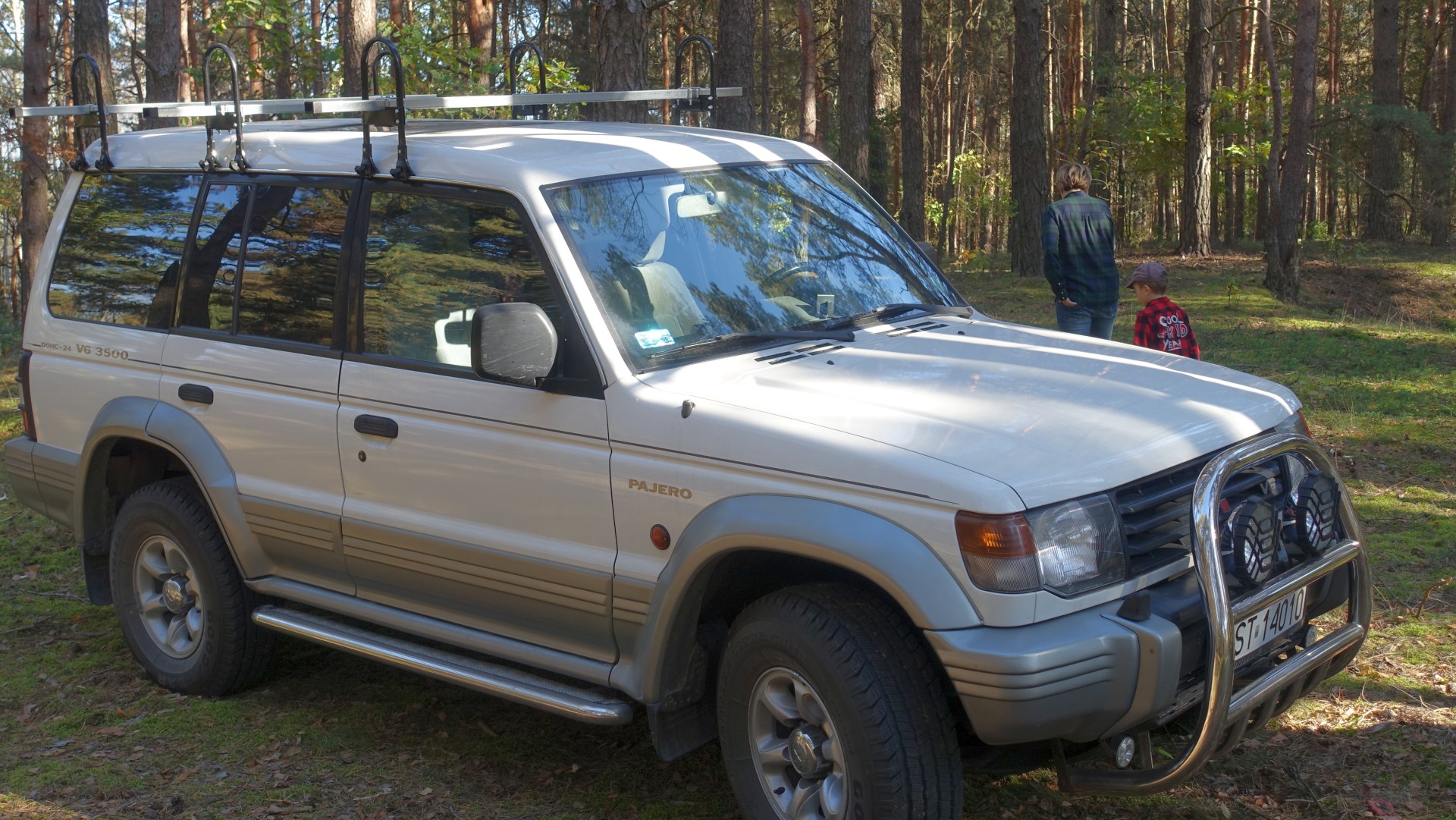Mitsubishi Pajero
April 12, 2019, 7:23 pm by: sigmaart
Unknown
GPS location

Mitsubishi Pajero II Long
Legendary Pajero II in the long version which was the last roadster of this Japanese manufacturer.
The next generations of the model have unfortunately had a reduced frame for a new type of chassis.
The advantages of this version include:
- Full frame
- Hydraulically steering the suspension
- Comfortable seats
- A large luggage space
- Big power of 205 HP 3.5 V6 engine
- Gear Reducer
- Super select 4WD drive
The Pajero IV has an extra wide front axle that is also more aggressive than that of the Pajero II.
The sidepod was lengthened to be wider than the model in the long version. This also means that the Pajero IV has no front brake and no front suspension.
The suspension is more powerful and wider than the models in the long version. A wider suspension means that they are more stable on the roads because there is less drag which increases cornering speeds.
The suspension for the Pajero V is also improved, which allows the driver to get more power from the front brake without having to sacrifice stability on the road. The Pajero V also comes with the same engine, a 4.5 liter. The new Pajero has an extra wide front axle and has 4.5" wheels.
The engine has 4 valves per cylinder while the Pajero V is only 2.4. This makes it much more powerful but still gives the same stability. The Pajero V also has a much better handling, thanks to the extra power.
The Pajero V has an extra rear suspension but the suspension for the long version is even more powerful.
The Pajero I is a bit better than the Pajero I because of a bigger fuel tank, but the long version is slightly inferior.
The Pajero II is the most basic model and therefore can not be compared to the Pajero I or II. It will probably remain in production for a very long time. Moreover, I think the models of the Pajero IV and V are quite similar. This makes me wonder how much difference a longer rear suspension make in the handling of a Pajero.
The long version of the Pajero IV was introduced in the 1990s and the production run of only 100,000 model was discontinued in 1997. Since then, the Pajero has not been in production with the same level of power as it did in the long version. It has been changed a bit since then, but the same basic model with an extra power is used today.
I believe that the long version of the Pajero was introduced in order to get rid of the weight from this version of the vehicle. The long version has a wider front axle with the same frame as the Pajero II .
The rear suspension has been lengthened and the front brakes are increased. The Pajero III has the same engine with the same displacement of 3.8 liters. The new Pajero is more powerful in the same way as the long model.
In 1995, a company called Cajeprice decided to revive the Pajero and changed the engine to 3.8 liters in order to get the same handling and cornering speed as the long model. As a result, they changed the rear suspension to 6.0 liters and added the extra rear suspension.
Leave comment
~carlos_lee said at November 19, 2025, 9:40 am :
~bors, while the Pajero II Long is indeed legendary, your arguments about the IV/V models' suspension and power trade-offs are overly simplistic. As someone who values mechanical integrity over marketing claims, I'd argue that the Pajero II's full-frame, hydraulically-assisted suspension, and balanced weight distribution offer a more genuine off-road experience than the later, heavier, and less mechanically coherent models. The legend' isn't just in power it's in the raw, unfiltered capability that the II Long delivered.
~bors said at April 24, 2019, 8:40 am :
Absolutely fantastic piece of power ! Wish to have this legend of offroad someday
~sales said at April 13, 2019, 5:53 pm :
This is great car - legendary construction and Dakar race won serveral times










